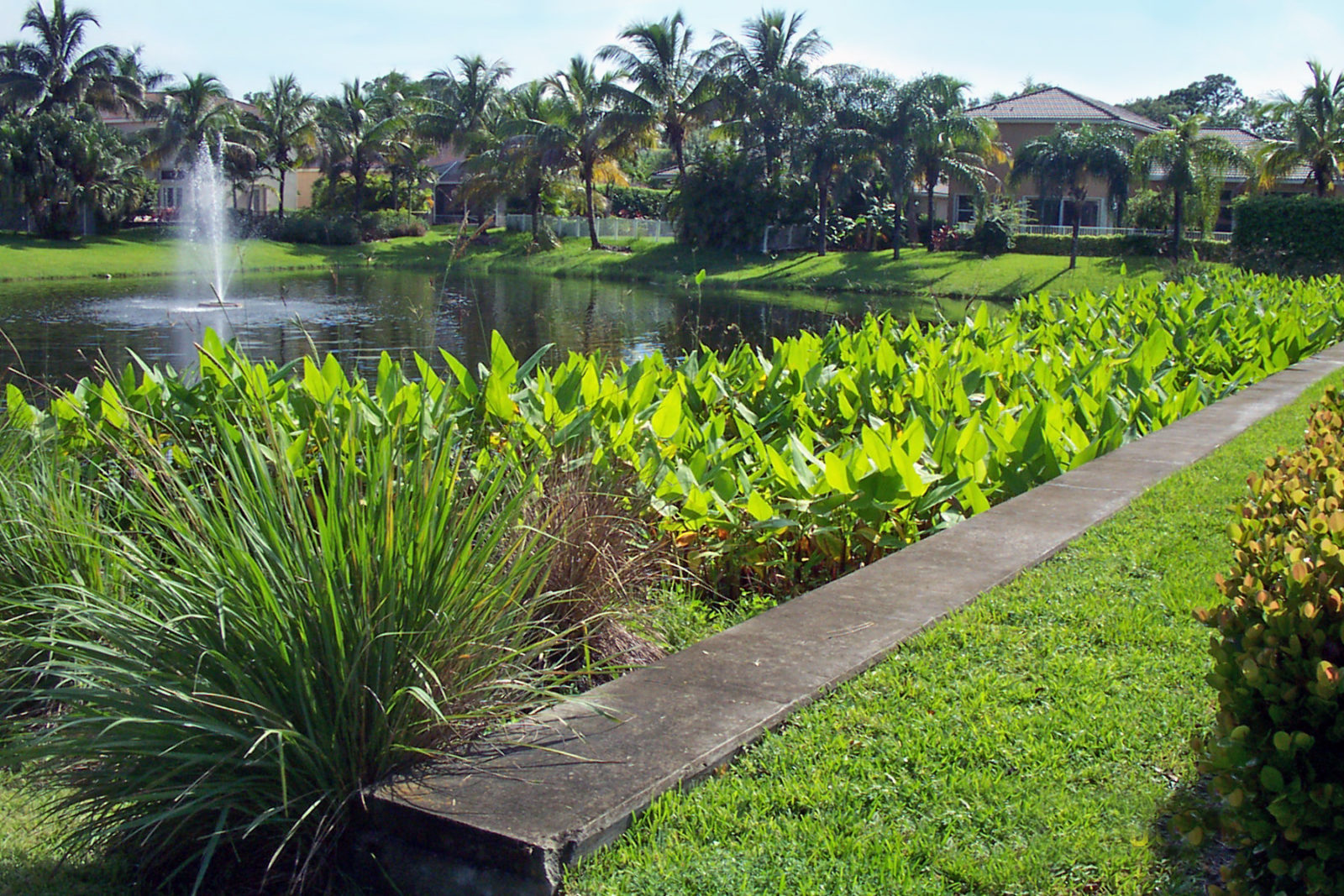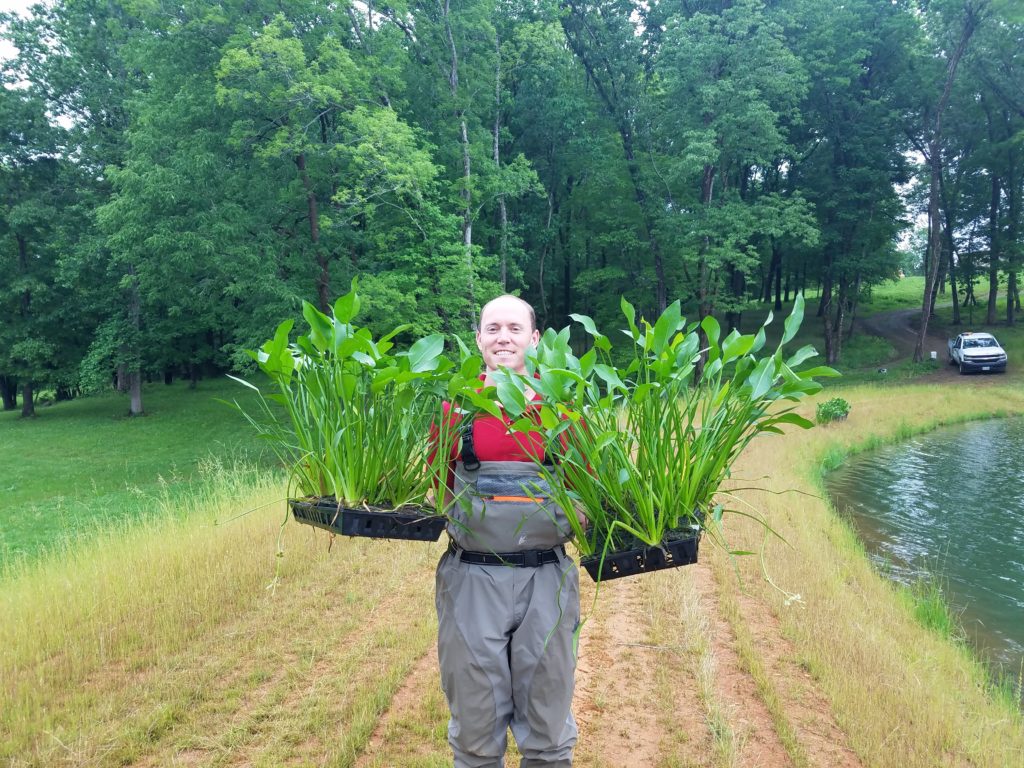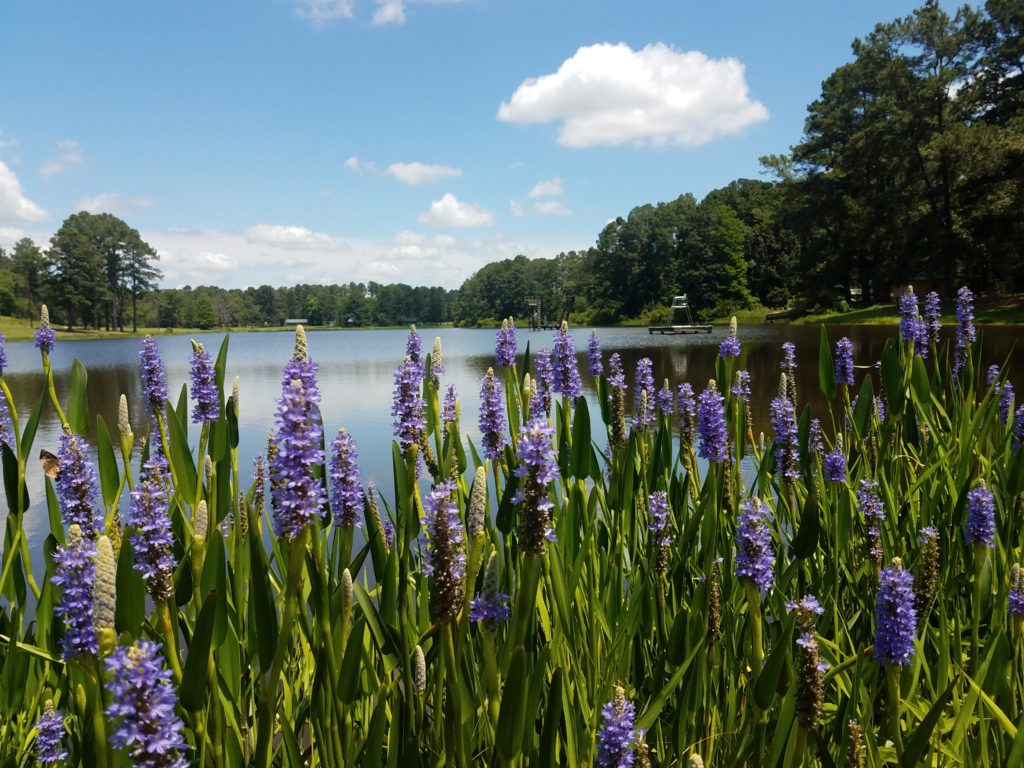
Improve Water Quality and Enhance Beauty with Pond Buffers
Many water quality problems are caused by or intensified by factors that begin outside of a waterbody. To help combat the negative effects of stormwater runoff, it’s important to cultivate a beneficial vegetative buffer around the perimeter of your lake or stormwater pond. Proper vegetation management in these key buffer zones allows for the filtration of excess nutrients such as phosphorus and nitrogen from the water column, as well as from inflowing water runoff from the surrounding watersheds that typically occur after every rain event. These buffers also help to maintain shoreline stability and prevent erosion and sedimentation.
How can I establish a vegetative buffer?
With the right vegetation management services, these buffers also provide sufficient habitats for native birds, and help to deter mosquitoes by minimizing the habitat for their breeding and providing good habitat for natural insect predators such as dragonflies. Without a vegetative buffer in place, lakes and ponds are more likely to struggle with persistent algae growth, turbidity, foul odors, mosquitoes, geese, erosion, sedimentation, and many other water quality issues.
Buffer and Littoral Zones
Buffers should be comprised of native grasses and flowering species that extend three to five feet or more from the water’s edge. The plant species you choose to comprise your buffer may differ by region, so it is beneficial to consult with an aquatic management professional to ensure you are not introducing nuisance or invasive species to your waterbody. However, some common, easy-to-maintain buffer plants include:
- Pickerelweed
- Duck Potato
- Cardinal Flower
- Swamp Milkweed
- Native sedges and rushes
- Blueflag Iris
Allow Beneficial Plants To Take Root
Many communities do a good job of establishing a buffer but often fall short in their overall vegetation management. It is a very common temptation for lake or pond owners and managers to want to cut or trim their aquatic vegetation buffers multiple times per season. By doing so, they are actually reversing the beneficial effects of having the buffer, and in many cases, actually causing more harm to the pond water quality and overall ecosystem than if they had never had a buffer at all. By allowing beneficial plants to take root, your waterbody can function as both a refuge for native wildlife and as a beautiful spot for the community to enjoy.











